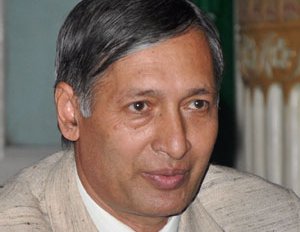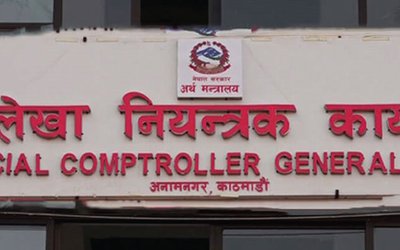
Although Nepal’s micro-economic foundation remains stable, the country has suffered a huge trade deficit in it first quarter. As the demand for petroleum products continues to increase and their prices soar, Nepal is unlikely to close its trade deficit any time soon.
According to a recently released quarterly report of Nepal Rastra Bank, Nepal´s total trade deficit increased by 11.3 percent to Rs 128.9 billion during the first quarter of 2013/14 compared to the figures of the same quarter of the last fiscal year.
The most worrisome is huge trade gap with India. The macro-economic report released by Nepal Rastra Bank (NRB) shows that country´s trade deficit with India surged by 14.2 percent during the review period. As India is Nepal’s largest trading partner, the deficit is worrisome for microeconomic stability. During the last three months, Nepal´s trade deficit with other countries also increased by 5.9 percent.
Nepal has made certain progress in export to India in the first quarter as it increased by 18 percent in the review period. However, export overseas went up by a marginal 1.2 percent. World Bank’s Development Report, October 2013, for Nepal has also indicated vulnerabilities of the Nepalese economy. While Nepal’s macroeconomic fundamentals remain stable, sources of vulnerability have not disappeared. Despite a large- and growing-trade imbalance, the current account remained in surplus and significant foreign exchange reserve was accumulated in FY 2013, thanks to the countervailing impact of remittance which continued to grow robustly ( albeit at a slower pace than in previous years),” says the report.
Economists are also worried about the situation. “Nepal needs to take a drastic step to balance the trade. If the trend continues, Nepal may face serious problems in maintaining the macro-economic stability,” said Dr. Bishwombher Pyakuryal.
Nepal exported good volumes of items like zinc sheet, cardamom, juice, herbal medicine, shoes and sandals to India during the review period. After facing a slack, exports of woolen carpet, readymade garments, pashmina products and medicinal herbs, among others, to third countries went up in the first quarter.
During the review period, total merchandise imports soared by 11.3 percent to Rs 151.86 billion. Import from India and overseas countries rose by 14.8 percent and 5.1 percent, respectively.
According to Nepal Rastra Bank, imports from India increased primarily due to rise in imports of petroleum products, cold-rolled sheet in coil, thread, and vehicles & spare parts, among others. Imports from other countries went up on account of rise in imports of silver, crude soybean oil, chemical fertilizer, other stationeries, and transport equipments and parts among others.
According to the NRB report, Nepal reported Balance of Payment (BoP) surplus of Rs 52.74 in the first quarter. The country had recorded BoP surplus of Rs 2.05 billion during the same period last year.
Similarly, foreign exchange reserve also increased by 13.8 percent to Rs 606.82 billion in mid-October, up from Rs 533.3 billion recorded as at mid-July. Remittances from Nepali overseas workers surged by 38.2 percent to Rs 135.03 billion during the review quarter.
However, remittance inflows increased by 21.3 percent in dollar term to US$ 1.36 billion. Year-on-year inflation during the month ending mid-October has been reported at 8.4 percent. The government has set a target of containing inflation at 8 percent in the current fiscal year. During the same month in the last fiscal year, inflation was recorded at 10.5 percent.
The inflation continues to go up as the prices of food & beverage group, and non-food and services group increased by 10 percent and 6.9 percent respectively. According to the report, price index of meat and fish sub-group jumped by the highest rate of 18.5 percent. Similarly, the price indices of vegetables sub-group and restaurant and hotel sub-group went up by 14.0 percent and 11.9 percent, respectively.
As there was festive season during the quarter, the prices of cereals, grains and their products sub-group and tobacco products sub-group increased by 11.5 percent and 9.9 percent respectively. Due to festive season, the price index of clothing and footwear has also increased by 11.7 percent
The first quarter report indicated that Nepal needs to promote export to make the trade deficit with India.

Debesh Adhikari
Adhikari is a computer science student and writes on various contemporary issues.
- The UK Expressed Deep Concerned About Tensions in Nepal
- Mar 09, 2017
- Development Partners and Ministry of Education Agree to drive quality education
- Sep 28, 2016
- END HUNGERNepal plans to end hunger by 2025
- Mar 14, 2016
- UK Hopes For Inclusive Resolution For Nepal
- Sep 17, 2015
- Micromax Launches Bolt D320 For Nepali Market
- Aug 07, 2015
















